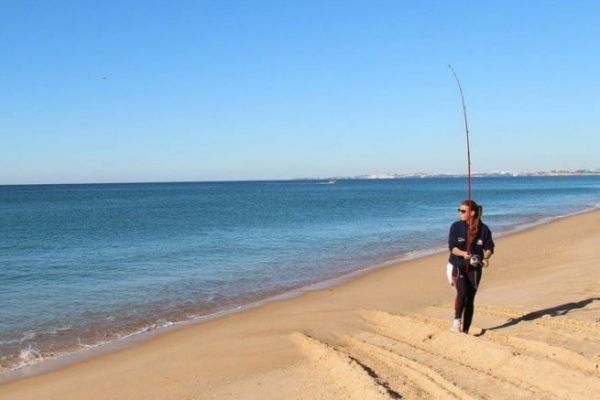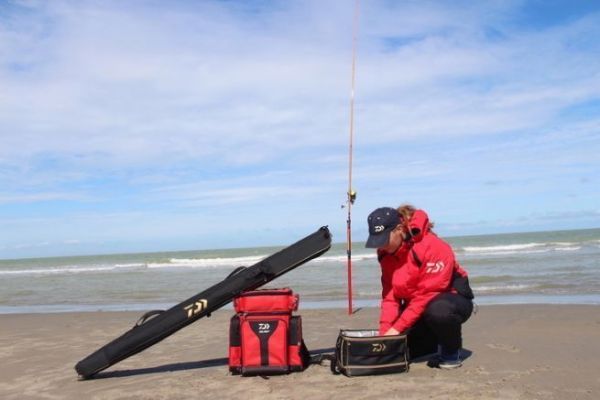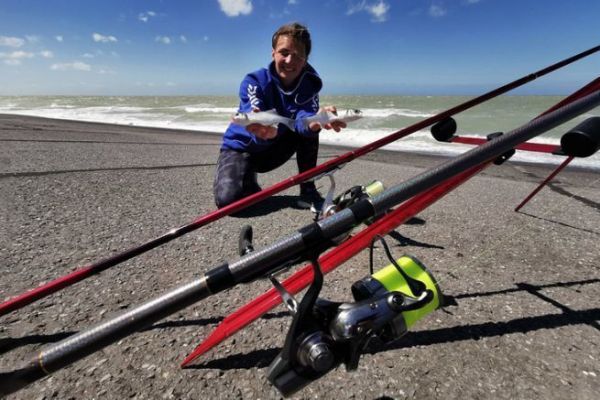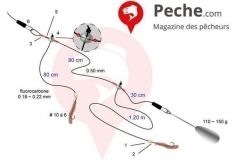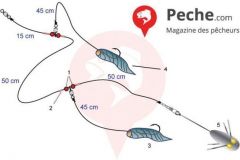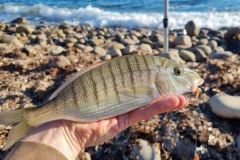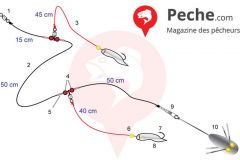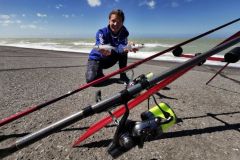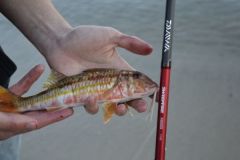Choice of cane
There are so many criteria and components to consider when buying a rod. So many, in fact, that I'd like to devote a separate article to this subject in the near future. In the meantime, here are a few tips for buying your first rod if you're new to surfcasting.
- The action
For beginners in surfcasting, it's best to use a rod with a semi-parabolic action. This means that when casting, the blank (the carbon body) of the rod will bend on its upper half. This rod action is ideal because it offers a good reserve of power for casting as far as possible, while still being sensitive enough to perceive bites.
- The length
Most surfcasting rods are either 4.20 or 4.50 m long. There are two schools of thought, and surfcasters generally opt exclusively for one size or the other. As 4.20 m rods are shorter and lighter, they are easier to handle and consume less energy: they load more easily with power and allow good casting distances. I would therefore advise a beginner to choose a 4.20 m rod, but if you get the chance, experiment with the same rod in two different sizes and select the one with which you get the best feel.

Technical expertise at an affordable price
Today, surfcasting rods have reached a very high level of technical sophistication. While this has enabled top-of-the-range models to approach perfection, "mid-range" and "entry-level" rods have also benefited. You can buy a rod equipped with Fuji components and high-modulus carbon for around ?150.
Choosing your reel
There are fewer reels to choose from than rods, so the choice is simpler.
The first thing to look for is a large, long-range spinning reel. The spool must be large enough to hold at least 200 metres of nylon or braid with diameters ranging from 16/100 to 35/100. Reels for surfcasting must have a retrieve of at least 70 cm per turn of the crank.

A brake on winning battles
To be ready to fight the biggest fish, the reel must be equipped with a drag, adjustable on the top of the spool, of at least 8 kg. This kilo indication does not refer to the weight of the fish, but to the maximum tension that can be exerted on the reel's drag. For larger fish, it may be necessary to adjust the brake and loosen it. This allows you to release ballast and let the fish swim a little more freely: this relieves the tension on the line and prevents breakage. The trick is to find the right compromise between the line taken by the fish and the line you retrieve when the fish pauses. Little by little, you take over until the fish is dry!
To protect reels from the elements, some brands equip their reels with erosion-resistant components specially designed for sea fishing.
You're now equipped with your rod and reel combo, but you're still missing a few essentials like your rod holder and dedicated luggage!



